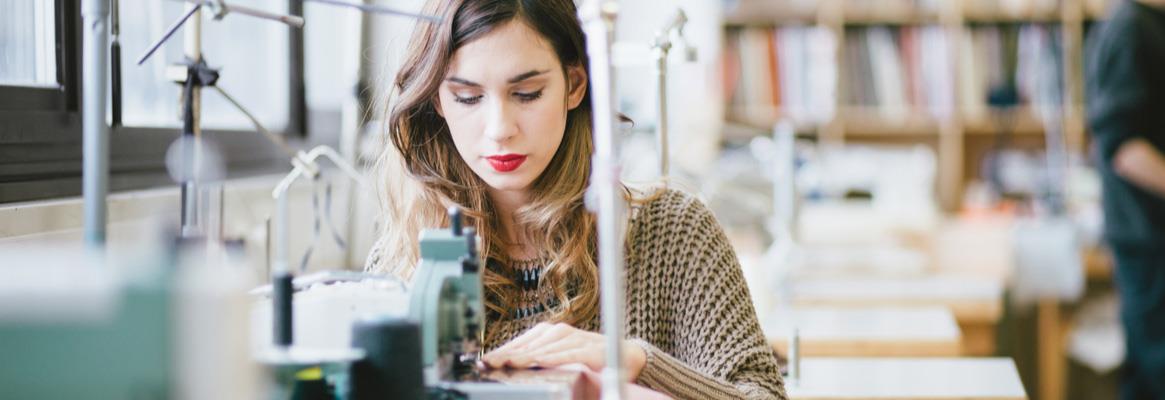Covid-19 is one of the most catastrophic events in history after World War II and has led to disastrous consequences the world over. It hasn’t spared the fashion industry either, with demand and supply hitting an all-time low and millions of workers left jobless.
The spread of Coronavirus disease 2019 (COVID‑19) that resulted in a global pandemic is a perfect example of a Black Swan Event in recent times. Black Swan events are characterised by their extreme rarity, their severe impact, and the widespread insistence they were obvious in hindsight1. A complete lockdown by most of the affected nations prohibited any sort of activities within the country and in rest of the world. It is one of the mega historic events after World War-II (1939-45), which directly and indirectly affected the world in monstrous ways.
Since all socio-economic activities have been depressed since the outbreak of COVID-19, one of the major areas which have been affected is undoubtedly the fashion industry. Prior to this historic black swan event, the industry witnessed undesirable slow down during financial crisis of 2007–08, which by and large can be attributed to demand-supply mismatch.
The complex supply chain of fashion industry that on one hand focuses on high fashion (designer clothes famously known as haute couture), whereas a substantial segment is gigantic mass production especially by countries like India, China, Bangladesh, Vietnam, Philippines, Turkey, Morocco etc. Needless to say, it is a multibillion-dollar global enterprise devoted to the business of making and selling not only clothes but also accessories and textiles. It forms part of a larger social and cultural phenomenon known as “fashion system,” a concept that embraces not only the business of fashion but also the art and craft of fashion, and not only production but also consumption2.
The present situation has resulted in significant inconsistency and decline in demand, supply and consumption, whereas the cost to sustain businesses is skyrocketing. Millions of workers who are directly or indirectly involved in the business are in deep shock. Major production firms have shifted to manufacturing personal protective equipment kit (PPE Kit) for government or private agencies, for the kits to be consumed by frontline warriors fighting Covid-19. Major e-commerce players are somehow managing to be in business by contactless delivery.
Therefore a number of questions arise:
1) What is going to happen with the fate of this highly volatile fashion industry in coming days?
2) Could e-commerce model be more robust and sustainable in such a scenario?
3) What could be the tax relaxation offer made by the government for the struggling fashion industry?
4) What is the alternative to labourers who are the backbone of apparel production?
5) What career choices or opportunities would be available for the middle and high level employees, who have been fired or laid off from the firms they worked, either because of pressure, safety or compelling salary deductions?
6) Most prominently, would consumers behave in the similar way as they were during pre-pandemic times?
7) What would be the new normal in fashion industry, once it is all over?
8) How much time would be required for the situation to be normal? Whether it would be as normal as it used to be?
9) What could be the roles of assumptions in model building for the upcoming markets?
10) Which probabilistic or statistical methods should be taken into consideration for predictive analysis and how far or true it can go?
It is certain that there is going to be a remarkable change in the course of all economic and social models which have already started to show. Behavioural change of consumers is bound to happen, which would largely impact the overall business of any industry. A large chunk of consumers have witnessed and realised that, less consumption means simplicity over complexity. There could be trade-off in consumption pattern by global citizens. A model of deliberate simplification could be a new normal, which might challenge and aggravate the industries and especially fashion industry. While the bad side of uncertainty is the complete unawareness and lack of knowledge about future, the good side is accepting the current situation and making a roadmap for the future. Modifying business models and strategies, dependency on latest technology, close study of buying behaviour, quantification of further risks, deep study of social engineering and its rapid change may help to formulate decisions and to some extent, help understanding uncertainty and come out with probable solutions.
There are so many apprehensions and obstacles in the way; however a deep understanding of the current global crisis and subsequent application of qualitative and quantitative research could throw up a feasible solution to plan and execute in order to safeguard the interests of stakeholders.
Considering the present situation, by fair means, the theory of evolution by natural selection formulated by Charles Darwin in his book ‘On the Origin of Species’ in 1859 holds true even today, where he described that - Evolution is the process by which organisms change over time as a result of changes in heritable physical or behavioural traits. Changes that allow an organism to better adapt to its environment will help it survive and have more offspring3.
About the Author: The author is an Assistant Professor & CC-FC at the Department of Fashion Communication (FC), National Institute of Fashion Technology (NIFT), (Ministry of Textiles, Govt of India), Patna, Bihar (India).
References: -
1. https://www.investopedia.com/terms/b/blackswan.asp (Accessed on 13/08/2020)
2.https://www.britannica.com/art/fashion-industry/Fashion-retailing-marketing-and-merchandising (Accessed on 13/08/2020)
3. https://www.livescience.com/474-controversy-evolution-works.html (Accessed on 13/08/2020)









Comments